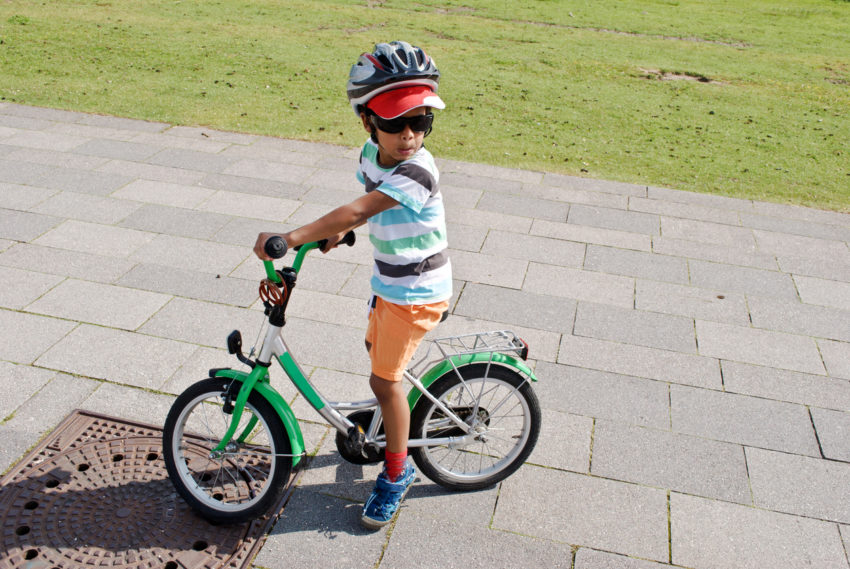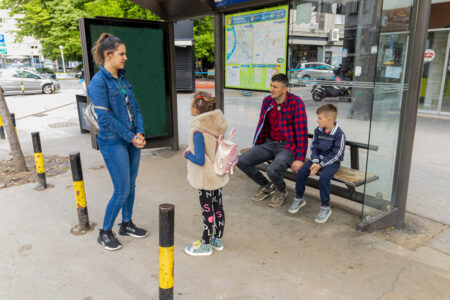
Share On Social!
Walking and biking are critical transportation options for physical and mental health.
More importantly, they are essential to get to destinations, particularly Latinos during the coronavirus pandemic — including those who are simultaneously less likely to work from home than their white peers and more likely to be impacted by job loss.
When the pandemic began, the portion of auto loan accounts in financial hardship jumped from 0.64% in March to 3.54% in April, according to TransUnion. Financial hardship status is defined by factors incliuding:
- A deferred payment or frozen past-due payment because a person is unable to keep up with payments due to a change in financial circumstances, such as loss of a job
- Significant cut in hours or pay
- Medical illness
To recover and rebuild resilient communities, Americans need state policies that support healthy transportation options.
That’s why the Safe Routes National Partnership developed state report cards on support for walking, biking, and physical activity.
“State governments play a crucial role in supporting opportunities for physical activity by enacting laws and policies and making funding decisions that lead to communities with health-promoting conditions on the ground,” the Making Strides 2020 report states. “States can pass laws that ensure that state money is not counter-productively spent on infrastructure or other programs that detract from health, but instead goes to support health.”
You can use your state report card to determine where your state is doing poorly to inspire change and to find out where your state is doing well to ensure protections.
Key Topics and Grading
Safe Routes National Partnership generated the report cards by evaluating each state across a total of 28 indicator areas spanning four core topic areas:
Complete Streets and Active Transportation Policy and Planning:
- At a minimum, Complete Streets policies commit the state department of transportation to consider users other than the car in decisions about roads. Strong Complete Streets policies can change the way roads are designed and built to ensure that people walking and bicycling receive much more protection and convenience than they currently do.
- By adopting goals to increase the number of people walking or bicycling or the proportion of trips made by bicycle or on foot, states can make effective plans to advance active transportation, perhaps by programs, developing other policies, or providing funding to meet its established goals.
 Federal and State Active Transportation Funding:
Federal and State Active Transportation Funding:
- With more than $800 million available each year, Transportation Alternatives Program (TAP) is the primary federal source of funding for active transportation. Federal support is particularly critical to low-income urban, suburban, and rural communities that lack the tax base to use local funds to make street improvements.
- While state active transportation funding has great variability, state funding provides an essential complement to federal money, and with fewer bureaucratic impediments, state money can often get into communities more rapidly than federal dollars.
Safe Routes to School Funding and Supportive Practices:
- When state departments of transportation (DOTs) prioritize Safe Routes to School for funding – TAP funding, other federal funding, and state funding – they enable more street safety improvements to be constructed near schools and on school routes.
- States can support local programs and communities through additional supportive practices, such as having DOT and/or consultant staff who are experienced and knowledgeable about Safe Routes to School as well as providing technical assistance, application assistance, webinars, workshops, and trainings, sample materials, and networking opportunities.
Active Neighborhoods and Schools:
- Opening school playgrounds and fields for recreational use outside of school hours, known as shared use, can be a quick and affordable way to increase the number of recreational facilities open to residents in a community. Shared use can increase access to recreational spaces for children and adults, increase physical activity, and may decrease obesity.
- States can require districts to consider the distances that students must travel to school when they make decisions about school site Smart school siting policies not only support physically active kids by allowing walking and biking to school and shared use of school grounds, but also yield other benefits, reducing cost, air pollution, and time spent on trips to school by school buses and private vehicles.
- Schools can help children be active and learn active lifetime habits by requiring quality physical education and by providing recess and other structured opportunities for physical activity. State laws or regulations can mandate that schools require that students meet the recommended weekly number of minutes of physical education for their grade range.
- When state public health departments have staff focused exclusively on physical activity, the state is more likely to successfully improve opportunities for physical activity for state residents.
“DOTs make key choices, such as how to implement the federal programs for active transportation, which projects they fund, what equity-oriented processes they use, and how quickly they get the funding out the door,” the report states.

The four core topic areas above add up to an overall grade of up to 200 points:
- Lacing Up (0-50 Points): The state may be taking some initial steps to supporting walking, bicycling, and physical activity, but the efforts are still getting off the ground.
- Warming Up (51-100 Points): The state has established some policies or initiatives, and may have taken some strong steps that support walking, bicycling and physical activity, but the state has not used many of the tools and techniques available.
- Making Strides (101-150 Points): The state has established multiple policies and initiatives that are moving the state in the right direction, but may still be missing some key strategies.
- Building Speed (151-200 Points): The state has made a significant commitment to support walking, bicycling, and physical activity and is providing support in multiple ways. This ranking shows that a state is a strong leader in the realm of physical activity – but that doesn’t mean that there is not still much more work to be done in every state to ensure that everyone has a chance to be healthy.
See How Your State Scored
Here are a few examples:
- Texas scored 54 of 200, falling in the “Warming Up” category.
- Most states were in the “Warming Up” category.
- California (163) and Massachusetts (150) were the only two states in the “Building Speed” category.
- Some states scored negative points in certain topic areas. For example, nine states transferred 40% or more of Transportation Alternatives Program (TAP) funds away from biking and walking and towards road and bridge projects.
Find out how your state scores in each topic area using this interactive map.
“This more robust analysis of state policy has shined a light on the need for deeper state commitments to transportation equity and physical activity,” the report states.
Push for change using the strategies below from How to Use Your State’s Report Card.
Ideas for Activities and Strategies to Promote Change
Bring media attention to the issue. Undertake a media campaign that focuses on areas where the state could improve and specific actions that the state could take.
Use social media to spread your message widely.
Engage local elected officials to encourage changes at the state level.
Speak with staff from the state departments working most closely on your topic of interest to understand the potential for supportive administrative changes.
If your state is developing a bicycle or pedestrian plan, physical activity plan, or other state-level plans, determine how you can participate and work to include specific goals and objectives that support healthier, active communities.
If there has been success in improving one area, think about working with partners to expand efforts to promote change in a related area. For example, if your state recently adopted a Complete Streets policy, but scored poorly in the Federal and State Active Transportation Funding section, reach out to Complete Streets advocates to begin to address funding.
Work with partners to adopt a local Complete Streets or other policy that supports walking, biking, or physical activity.
Work with community members to document and share neighborhood concerns and strengths through a Photovoice project.
Engage youth in developing a local or state campaign to advocate for changes with which they are most concerned.
By The Numbers
27
percent
of Latinos rely on public transit (compared to 14% of whites).



